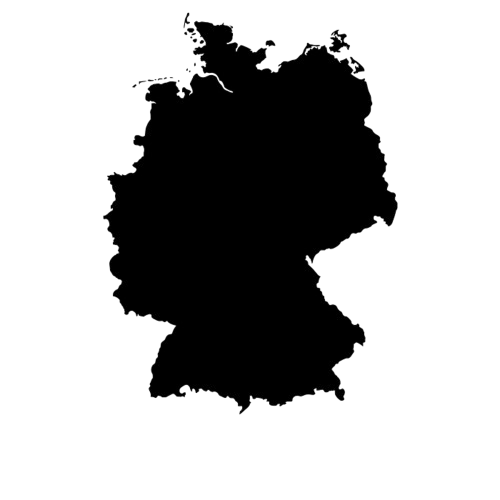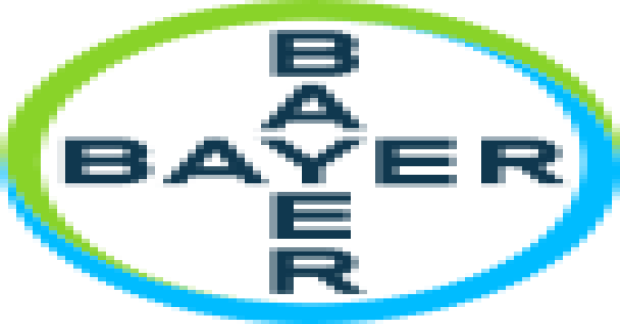Market Size of europe crop protection chemicals Industry
| Icons | Lable | Value |
|---|---|---|
|
|
Study Period | 2017 - 2029 |
|
|
Market Size (2024) | USD 15.48 Billion |
|
|
Market Size (2029) | USD 18.91 Billion |
|
|
Largest Share by Function | Herbicide |
|
|
CAGR (2024 - 2029) | 4.09 % |
|
|
Largest Share by Country | Germany |
|
|
Market Concentration | High |
Major Players |
||

|
||
|
*Disclaimer: Major Players sorted in no particular order |
Europe Crop Protection Chemicals Market Analysis
The Europe Crop Protection Chemicals Market size is estimated at 15.48 billion USD in 2024, and is expected to reach 18.91 billion USD by 2029, growing at a CAGR of 4.09% during the forecast period (2024-2029).
15.48 Billion
Market Size in 2024 (USD)
18.91 Billion
Market Size in 2029 (USD)
1.59 %
CAGR (2017-2023)
4.09 %
CAGR (2024-2029)
Largest Segment By Function
35.47 %
value share, Herbicide, 2023
The rise in weed infestations, which has greatly impacted the increasing domestic and international demand and increased concerns about food security, is driving the herbicide market.
Fastest-growing Segment by Function
5.40 %
Projected CAGR, Molluscicide, 2024-2029
Slugs like Arion, Milax, and Tandonia spp are the destructive pests of wheat crops in the United Kingdom. Indoxacarb and abamectin are effective molluscicides against these slugs.
Largest Segment by Crop Type
60.65 %
value share, Grains & Cereals, 2023
Europe is a major producer of grains and cereal crops such as wheat, maize, and barley. Glyphosate is one of the herbicides mostly used in cereal cultivation.
Largest Segment by Country
21.34 %
value share, Germany, 2023

The demand for crop protection chemicals is high in the country as pests and diseases pose a significant threat to the farmers, causing economic and yield losses.
Leading Market Player
22.83 %
market share, Bayer AG, 2022

Bayer has partnered with Oerth Bio with an aim to develop next-generation crop protection products based on Oerth Bio's innovative protein degradation technology.
Herbicides and fungicides dominate the market owing to their increased use in pest control
- Agriculture in Europe is diverse and plays a significant role in the economies of many countries. The region encompasses a wide range of climates and is known for cultivating wheat, barley, soybean, and various fruits and vegetables. In 2022, Europe occupied a share of 15.7% by value.
- The population growth in the region has encouraged the use of pesticides in agriculture to achieve better yields and meet the increasing demand for food crops. At the same time, technological advancements have changed the way of farming and eased the pest control process.
- Herbicides occupied the largest share of 34.7% by value in 2022. Weed attacks in staple, commercial, and horticultural crops pose a significant challenge to the region's agricultural productivity. As there is a significant contribution by the fruit sector to the region's economic growth, weeds cause substantial economic damage by attacking fruits. Amaranthus retroflexus (redroot pigweed), Echinochloa crus-galli (Barnyard grass), Conyza canadensis (Canadian fleabane), Digitaria sanguinalis (large crabgrass), Cyperus rotundus (purple nutsedge) are the most common weeds in the region. Therefore, herbicide use has increased to combat these weed attacks and maintain agricultural productivity.
- Fungicides occupied the second-highest share of 32.7%. Being one of the top regions for grains and pulses production, it is highly susceptible to fungal diseases, which are mitigated using fungicides.
- Increased concerns for food security and various developments have facilitated the efficient and sustainable production of food by farmers while minimizing the impact of pests on their crops. This has driven the market, which is anticipated to register a CAGR of 4.0% over the forecast period.
Germany dominated the market due to increasing weed infestation in major crops
- European farmers cultivate various crops, including grains (wheat, barley, oats, etc.), oilseeds (rapeseed, sunflower, etc.), fruits, vegetables, and various industrial crops. The Mediterranean region is known for olive and citrus production, while northern European countries focus on cereals and root crops.
- Among the countries, Germany dominated the market and accounted for a share of 21.6% in 2022. The total agricultural usage for insecticides accounted for 78,754 metric tons, followed by herbicides with 48,781 metric tons, and fungicides with 40,884 metric tons in 2022. According to Eurostat, Germany produced 47,974 metric tons of active ingredients in 2020, higher than 45,181 metric tons from the previous year. Increasing weed infestation in major crops and the need for crop protection to protect the yields are estimated to drive the market at a CAGR of 3.5% during the forecast period (2023-2029).
- Grains and cereal crops dominated the consumption of crop protection chemicals in the region, which accounted for 60.5% in 2022. The dominance of grains and cereals is attributed to the higher cultivation area and increased pest infestations. In 2022, these crops accounted for 63.0% of the agricultural land.
- The European crop protection chemicals market is driven by the need to increase crop yield and efficiency. The region's population is drastically growing, but the farmlands are diminishing. As a result, farmers are being pushed to increase their yield. Therefore, new farming practices are being adopted by farmers to increase crop yield, which is paving the way for the crop protection chemicals market. The market is anticipated to record a CAGR of 4.0% during the forecast period.
Europe Crop Protection Chemicals Industry Segmentation
Fungicide, Herbicide, Insecticide, Molluscicide, Nematicide are covered as segments by Function. Chemigation, Foliar, Fumigation, Seed Treatment, Soil Treatment are covered as segments by Application Mode. Commercial Crops, Fruits & Vegetables, Grains & Cereals, Pulses & Oilseeds, Turf & Ornamental are covered as segments by Crop Type. France, Germany, Italy, Netherlands, Russia, Spain, Ukraine, United Kingdom are covered as segments by Country.
- Agriculture in Europe is diverse and plays a significant role in the economies of many countries. The region encompasses a wide range of climates and is known for cultivating wheat, barley, soybean, and various fruits and vegetables. In 2022, Europe occupied a share of 15.7% by value.
- The population growth in the region has encouraged the use of pesticides in agriculture to achieve better yields and meet the increasing demand for food crops. At the same time, technological advancements have changed the way of farming and eased the pest control process.
- Herbicides occupied the largest share of 34.7% by value in 2022. Weed attacks in staple, commercial, and horticultural crops pose a significant challenge to the region's agricultural productivity. As there is a significant contribution by the fruit sector to the region's economic growth, weeds cause substantial economic damage by attacking fruits. Amaranthus retroflexus (redroot pigweed), Echinochloa crus-galli (Barnyard grass), Conyza canadensis (Canadian fleabane), Digitaria sanguinalis (large crabgrass), Cyperus rotundus (purple nutsedge) are the most common weeds in the region. Therefore, herbicide use has increased to combat these weed attacks and maintain agricultural productivity.
- Fungicides occupied the second-highest share of 32.7%. Being one of the top regions for grains and pulses production, it is highly susceptible to fungal diseases, which are mitigated using fungicides.
- Increased concerns for food security and various developments have facilitated the efficient and sustainable production of food by farmers while minimizing the impact of pests on their crops. This has driven the market, which is anticipated to register a CAGR of 4.0% over the forecast period.
| Function | |
| Fungicide | |
| Herbicide | |
| Insecticide | |
| Molluscicide | |
| Nematicide |
| Application Mode | |
| Chemigation | |
| Foliar | |
| Fumigation | |
| Seed Treatment | |
| Soil Treatment |
| Crop Type | |
| Commercial Crops | |
| Fruits & Vegetables | |
| Grains & Cereals | |
| Pulses & Oilseeds | |
| Turf & Ornamental |
| Country | |
| France | |
| Germany | |
| Italy | |
| Netherlands | |
| Russia | |
| Spain | |
| Ukraine | |
| United Kingdom | |
| Rest of Europe |
Europe Crop Protection Chemicals Market Size Summary
The Europe Crop Protection Chemicals Market is experiencing steady growth, driven by the region's diverse agricultural landscape and the increasing need to enhance crop yields amidst diminishing farmland. The market is characterized by the widespread use of herbicides, fungicides, and insecticides, with herbicides holding the largest share due to the significant challenge posed by weed infestations in staple and commercial crops. The Mediterranean region's focus on olive and citrus production, alongside northern Europe's emphasis on cereals and root crops, highlights the varied agricultural practices across the continent. Technological advancements in farming and pest control have further bolstered the market, enabling farmers to meet the rising food demand driven by population growth.
The market's expansion is also supported by the strategic use of active ingredients like cypermethrin, emamectin benzoate, azoxystrobin, and tebuconazole, which are crucial in managing pests and diseases that threaten crop productivity. The consolidation of the market is evident, with major players such as ADAMA Agricultural Solutions Ltd., BASF SE, Bayer AG, Nufarm Ltd, and Syngenta Group dominating the landscape. Recent product launches, like ADAMA's Kampai and Corteva Agriscience's Univoq, reflect ongoing innovations aimed at improving crop protection efficiency. These developments underscore the market's commitment to sustainable agricultural practices while addressing the challenges posed by pests and diseases across Europe's varied climatic regions.
Europe Crop Protection Chemicals Market Size - Table of Contents
-
1. MARKET SEGMENTATION (includes market size in Value in USD and Volume, Forecasts up to 2029 and analysis of growth prospects)
-
1.1 Function
-
1.1.1 Fungicide
-
1.1.2 Herbicide
-
1.1.3 Insecticide
-
1.1.4 Molluscicide
-
1.1.5 Nematicide
-
-
1.2 Application Mode
-
1.2.1 Chemigation
-
1.2.2 Foliar
-
1.2.3 Fumigation
-
1.2.4 Seed Treatment
-
1.2.5 Soil Treatment
-
-
1.3 Crop Type
-
1.3.1 Commercial Crops
-
1.3.2 Fruits & Vegetables
-
1.3.3 Grains & Cereals
-
1.3.4 Pulses & Oilseeds
-
1.3.5 Turf & Ornamental
-
-
1.4 Country
-
1.4.1 France
-
1.4.2 Germany
-
1.4.3 Italy
-
1.4.4 Netherlands
-
1.4.5 Russia
-
1.4.6 Spain
-
1.4.7 Ukraine
-
1.4.8 United Kingdom
-
1.4.9 Rest of Europe
-
-
Europe Crop Protection Chemicals Market Size FAQs
How big is the Europe Crop Protection Chemicals Market?
The Europe Crop Protection Chemicals Market size is expected to reach USD 15.48 billion in 2024 and grow at a CAGR of 4.09% to reach USD 18.91 billion by 2029.
What is the current Europe Crop Protection Chemicals Market size?
In 2024, the Europe Crop Protection Chemicals Market size is expected to reach USD 15.48 billion.

